9. Parallel Processing
Parallel processing comes in many forms, but the most popular (and sometimes misunderstood) is parallel compression. Unlike regular compression, parallel compression is best thought of as a technique for ‘filling in the gaps’ between the higher peaks of a signal.
In effect this means that this type of compression is less prone to heavy squashing and allows the processed material to maintain its punch, transients and definition, while also appearing bigger and more full.
We’ll start with a single uncompressed bass track:
Audio PlayerThen we’ll duplicate it (we could also route it to an aux channel):
Now we’ll apply heavy compression to the second version only. Use a fast attack, medium release and very low threshold to ensure we dial in a lot of gain reduction. You may have to apply quite a bit of make-up gain here to compensate for the gain reduction.
Here’s how the heavily compressed duplicate sounds on its own:
Audio PlayerHere’s how it sounds as we slowly bring up the level of the compressed version until we reach the point where it sounds just right, making the bassline thicker and heavier:
Audio PlayerSome compressor plugins even have a mix control built in. The Output Mix control in Logic’s compressor allows parallel compression to be set up without the need to copy the track or route to an aux bus.
Compression isn’t the only effect which lends itself to parallel processing. You can try something similar with parallel distortion, for example, which allows the distorted part to be processed separately – EQd, filtered and tweaked until the overall sound is just right. The distorted parallel channel can even be automated, introducing a more distorted version of the sound during certain parts of the song or emphasising certain sections.
Audio PlayerIt’s important to remember that distortion also adds harmonics higher up the frequency range, which may help to thicken out the sound further and make it more prominent in the mix but can also potentially clash with other instruments. There’s little point adding a load of high frequency harmonics with distortion only to cut them back out with EQ when you mix the track.
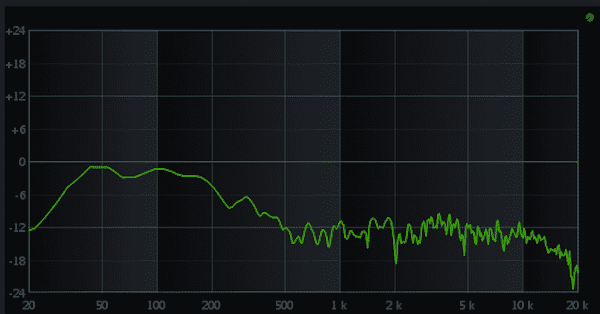
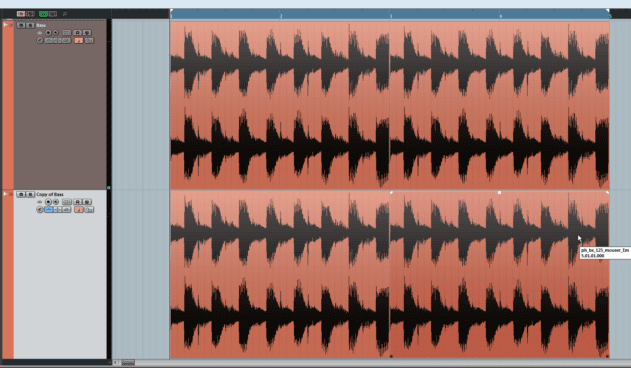
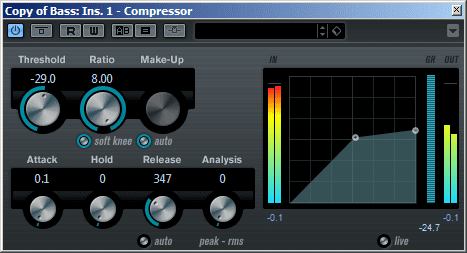
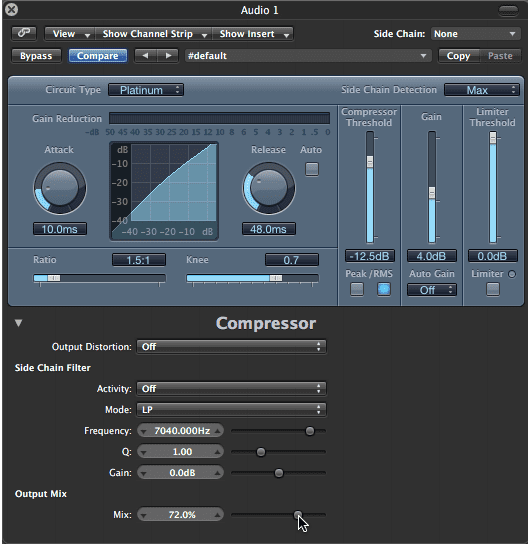
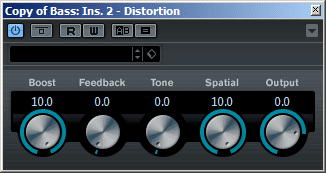



08.15 PM
Nice article guys! I’m lovin Attack Magazine, in my opinion it’s the best website about electronic music 😉 thanks a lot! Cheers from Brazil
08.30 AM
I am really really enjoying the work you are doing with your articles!
Keep up the good work.
05.11 PM
I love these articles! I noticed that this lesson said it would teach us to make better basslines, but even though in the first page it saya that melody is one of the main things that needs to be considered; but there arent any specific tips in this article about choosing bassline notes! 🙂
I love you guys, can ya break that part down some more? Or do you just do the melody by ear?
07.04 PM
^ BIlly, I don’t want to be annoying but this article is one of the most complete I’ve ever seen on the internet. It’s kinda ungrateful to ask EVEN more about it… seriously :/
07.53 PM
@Billy, @Claudio…
No problems at all with the request…
It’s true that, of course, the melody plays a (the?) fundamental part in a successful bassline. This piece wasn’t about programming – but I certainly suggest reading the various Passing Notes pieces (http://www.attackmagazine.com/technique/passing-notes/) which are designed to give a good grounding in music theory, including the disco basslines piece (http://www.attackmagazine.com/technique/passing-notes/passing-notes-disco-house-basslines/) which has a lot of insights – even if you hate disco!
And, as ever, keep watching this space!
Dave@Attack
06.21 AM
Really helpful stuff, muchas gracias amigos!
10.02 PM
holycow. its difficult
on one dark-hand side i hope this page stays my my my own sweet little secret…. anyhow thanks for ur great work!!!
01.23 PM
This is a great article, thanks! However, the bass player plugin shows that there is no substitute for a real practiced human! Or a sample of one: but then of course you have to spend three months slicing and dicing ala Justice to keep the lawyers off your tail!
10.28 AM
hi, I own the tal u no lx but i cant find the mrs digit preset, does it come with it or is named something else?
Thanks!
11.11 AM
Luke – well spotted. We’re pretty sure the Mrs Digit patch is a Mr Fingers-inspired bass sound the writer created for the audio example. U-NO-LX is so simple that you should be able to copy the patch from the screengrab (although we had to increase the filter cutoff slightly to get the same sound).
If you’re looking for an even more accurate version of the classic Larry Heard sound, try the sub-oscillator on its own. Or you could use the pulse oscillator and set the pulse width manually to get a variety of slightly fuller or hollower sounds.
U-NO-LX is excellent for those 80s analogue bass sounds. We’re big fans.
http://www.attackmagazine.com/reviews/gear-software/tal-u-no-lx/
12.58 AM
Attack WE LOVE YOU.
03.37 PM
Thanks so much for this. Learning so much through your tutorials.
04.52 PM
very hot magazine! keep it coming
01.08 AM
this tutorial came in very handy for me, thank you attack people..very well written and it reminded me of some stuff i (probably) already had forgotten to consider again. big ups from vienna
02.28 AM
attack magazine thank you very much. very useful article .
08.28 PM
Awesome article. Thanks
12.47 AM
Another incredible article. Informative and clearly explained.
Attack is rapidly becoming my number one resource for production tips.
03.53 PM
Just got wind of this site. I will definitely be here more than ever. Really enlightening
08.22 PM
Just found this magazine, excellent well written articles. This one was excellent and covered lots of stuff. Ill be trying that notch on my bass eq real soon. Keep it up guys, great stuff
03.41 AM
If you’re using reverb on your bass, put the EQ before the reverb. It won’t matter so much for bass as for other instruments, but it will sound somewhat unnatural to have the reverb filtered.
01.36 PM
How have I missed this article? Great read as ever guys and very informative!
08.02 PM
great article but please for the love of god fix or change the sound player, its freezes after 2 seconds and never starts playing again, i have to refresh couple of times to even hear the whole soundclip
09.55 AM
I am new to this site and I must say the few articles I’ve read are quite good.
keep up the good work
12.55 AM
The best articles I’ve read in my life. Great work guys. Keep it up!
10.54 AM
Awesome tips—could u possibly provide the readers with a PDF version of the articles?
11.00 AM
amazing stuff guys……..really great content!
06.32 PM
Does this work on 808 bass?
12.16 AM
THIS IS SHIT
10.42 PM
Thanks for all of your excellent tutorials
06.04 PM
Nice article. I have just released a free youtube series on how to write bass lines too. Check it out!
https://www.youtube.com/watch?v=NHIHncaNaDw
02.55 PM
Any other software alternatives for the VOG plug-in you mentioned for boosting low-end?
Boz ‘Bark Of Dog’ resonant filter?
Tone2 Bifilter?
Any EQ like the Logic EQ or Pro-Q with a resonant low-shelf?
02.55 PM
oh, and great article btw. Attack Mag is fast becoming my favourite site for these tips and walkthroughs!
05.27 PM
Thanks! Best tutorial